Yes! I'd like to be contacted to schedule a consultation!
You’ve mastered the fundamentals that make you an industry-leading arborist, but you still have a tough time connecting with potential clients. People who need your tree services seem to find your competitors before you when searching for arborist services online.
Why is that? What can you do to help your arborist website rank higher and be seen by more people?
In this blog, LinkNow Media’s SEO specialists explain what search engine optimization (SEO) is and how you can use it to improve your business’s opportunities to be found online. We detail the steps to implement a robust SEO strategy and help you attract and turn those new site viewers into paying customers.
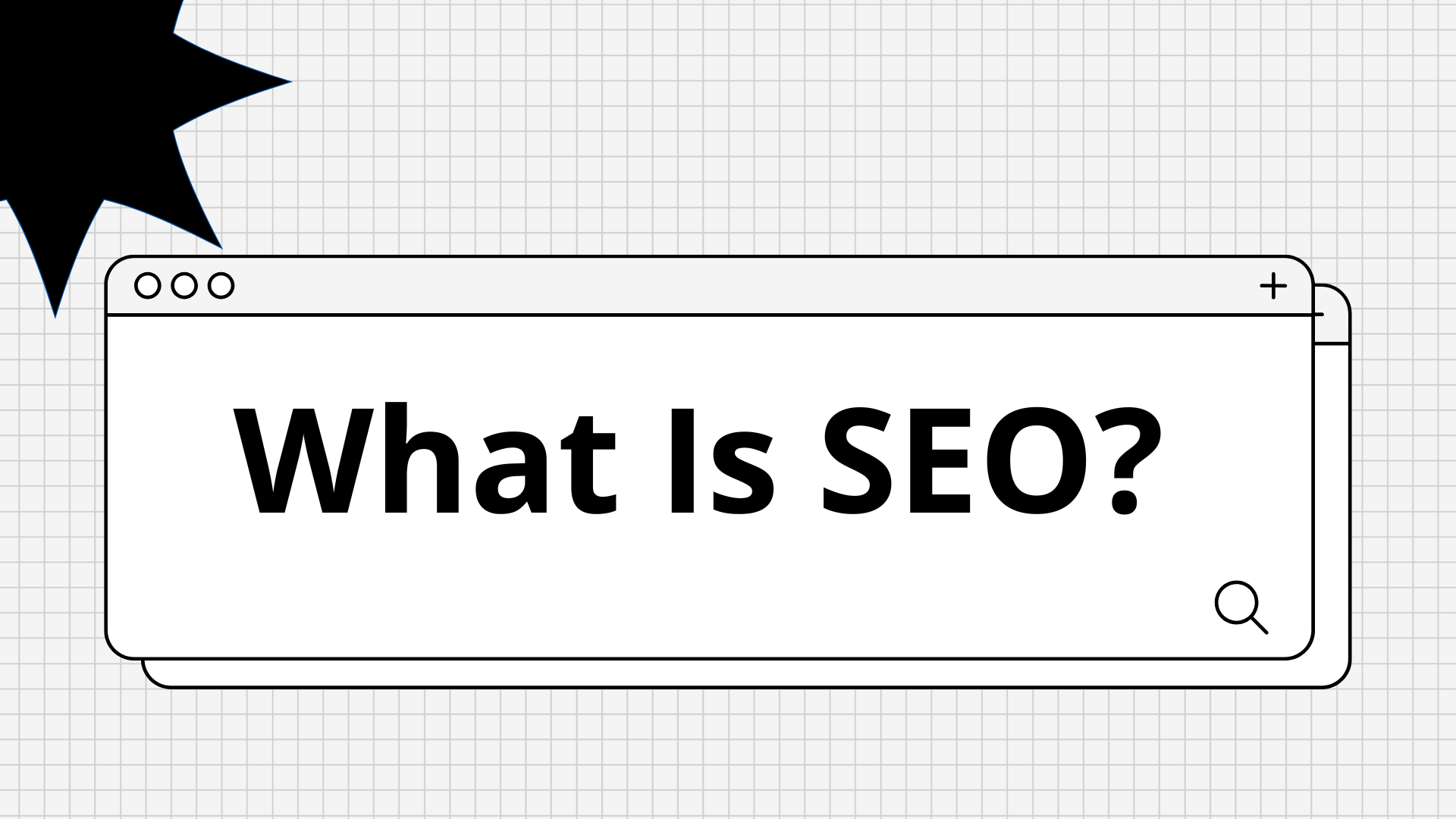
SEO for arborist websites is when you make changes to improve your site’s visibility in search engines to attract more local customers seeking tree care services. It involves tailoring your content and website structure to align with search engine algorithms, ensuring your site ranks higher for relevant terms like “tree pruning,” “stump removal,” or “emergency arborist near me.”
Effective SEO includes optimizing your service pages with location-specific keywords, creating engaging content like blog posts or FAQs about tree care, and enhancing your Google Business Profile (GBP) for local searches. Technical aspects, like fast loading speeds, mobile-friendly design, and secure connections, are also important aspects that help you secure a higher page rank.
SEO isn’t just about being seen—it’s about connecting with the right audience at the right time and positioning your arborist services as the go-to solution for tree care needs in your area.
Search engines use advanced algorithms to find, index, and display your arborist services so potential clients can easily discover your expertise. Their web crawlers scan your website, analyzing content like service descriptions, keywords, and images related to tree care, pruning, or stump removal. Search engines then store this information in an index, a massive database that organizes your website’s content for quick retrieval.
When someone searches for arborist services, the search engine matches the query with relevant indexed data, ranking your site based on factors like keyword relevance, location, and the quality of your content. The rank your page receives will dictate where it appears in SERPs. This is important because people needing tree services typically won’t look past the first page of results.
If you don’t appear there, you’re getting looked over, even if you’re the best and most affordable arboriculturist for the job.
Does a low site rank always mean search engines and people who have previously visited your site think you’re not a good arborist? Absolutely not. It just means you’re probably not using the science of SEO to your advantage. Without implementing clear signals, people and engines can’t understand what your site is about, which services you specialize in, and what makes you a local tree care, cutting, and safety authority.
When users and engines don’t understand your business and its offerings, they won’t recommend you because you’ve not been able to establish enough trust. Use our SEO best practices to build trust with search engines and users. That’s the secret to getting your arborist website and all your services in front of people actively searching for them online.
By optimizing your website with clear, detailed service pages, location-based keywords, and accurate metadata, you improve your visibility in search results, connecting more customers to your tree care expertise.
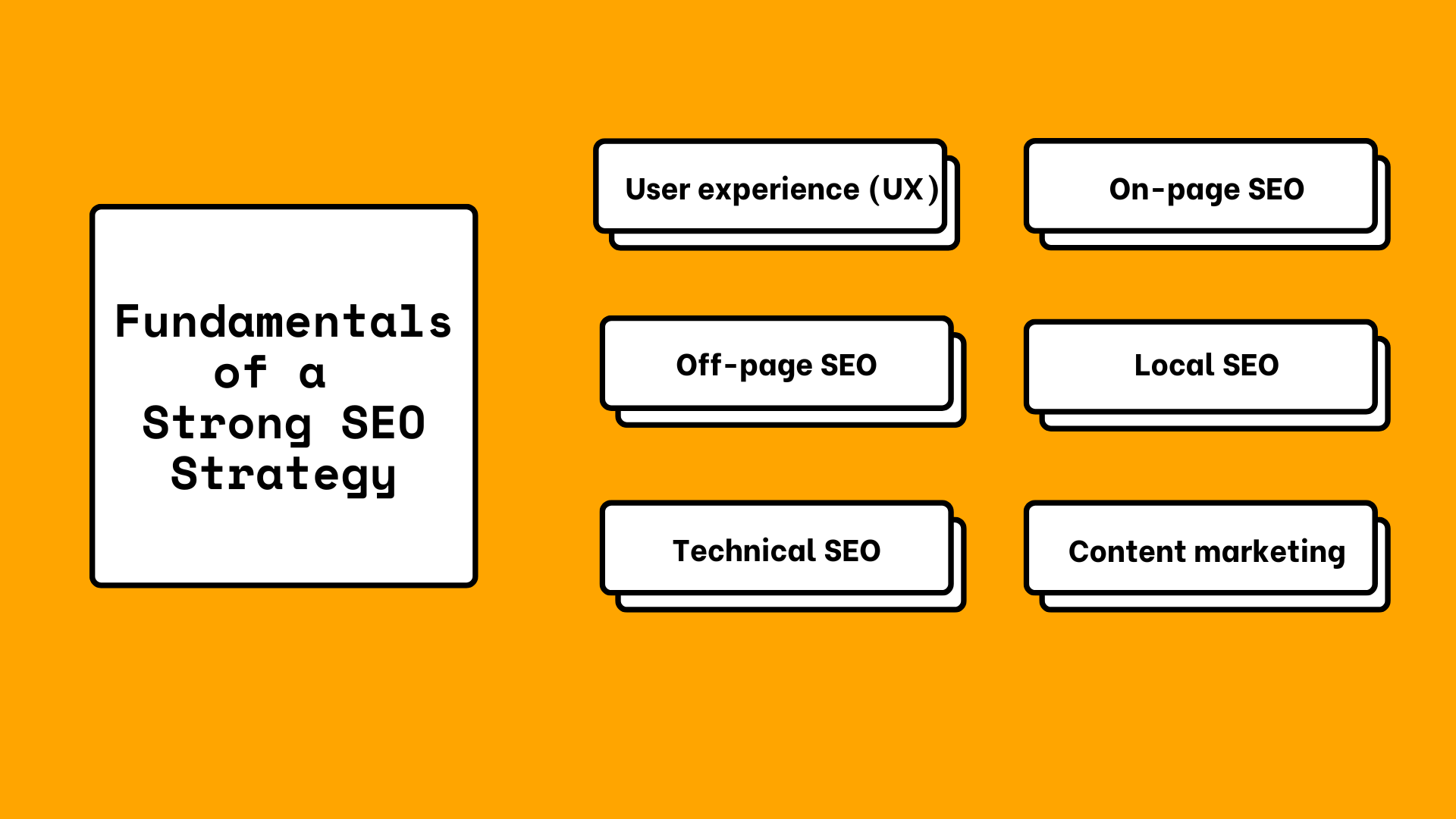
Give your SEO strategy a solid foundation by understanding all the facets of search engine optimization.
These include:
We’ll go through each of these below.

Creating an exceptional user experience (UX) for your tree service website is one of the best ways to attract more of your target audience while boosting your search engine rankings. When visitors find your site easy to navigate, with clear information about your services, fast loading times, and engaging, helpful content, they’re more likely to stay, explore, and contact you. These positive interactions show search engines that your site provides real value, which can lead to higher rankings in search results.
A great UX also includes mobile-friendly design, user accessibility, and naturally integrated keywords that help search engines understand your expertise. By focusing on what your customers and search engines need, you create a website that works harder for your business—bringing in more leads, building trust, and giving your tree service company a competitive advantage online when it outranks the rest.
As a tree expert, you’ll need to understand the following to implement a targeted on-page SEO strategy:
We’ll break these on-page SEO solutions down in the sections below.

Your primary keywords are the foundation of your SEO strategy, representing the services your customers are actively searching for. For tree service companies, these might include terms like "tree removal," "stump grinding," "tree pruning," or "arborist." To get the best results, use tools like Google Keyword Planner, Keywordtool.io, or Ahrefs to identify high-traffic, low-competition keywords relevant to your services.
Remember to include location-based keywords, like "tree trimming in [city]" or "local arborist near [area]," to attract nearby customers. Also, include some long-tail keywords—more specific phrases that often indicate higher buyer intent, like "affordable tree removal services for large trees," or aim to answer common questions, like “signs a tree is diseased.”
Regularly reviewing and updating your keyword list ensures your content stays aligned with customer needs and search trends, helping your site rank higher and connect with the right audience.
The length of the content you include on your arborist website matters, but you’ll still have to remember that content quality always trumps content length. While longer content tends to perform better in search engine rankings because it allows you to cover topics in greater depth, it’s crucial to focus on providing value.
For your arborist website, this means writing detailed, informative content about your services, like tree removal, pruning, or emergency care, while addressing common customer questions. Aim to create pages long enough to explain your expertise thoroughly but concise enough to keep readers engaged. For instance, service pages may require 500 to 1,000 words, while blogs can range from 1,000 to 2,000 words for comprehensive guides.
The way you structure your content matters, too. Use nested headings (H1, H2, H3, etc.) to break up pages and guide users and crawlers to the information they want.
Search engines prioritize content that satisfies user intent, so you should aim to strike the right balance between length and relevance. Ultimately, your goal should be effectively answering your audience’s questions, whether in a short FAQ or an in-depth article.
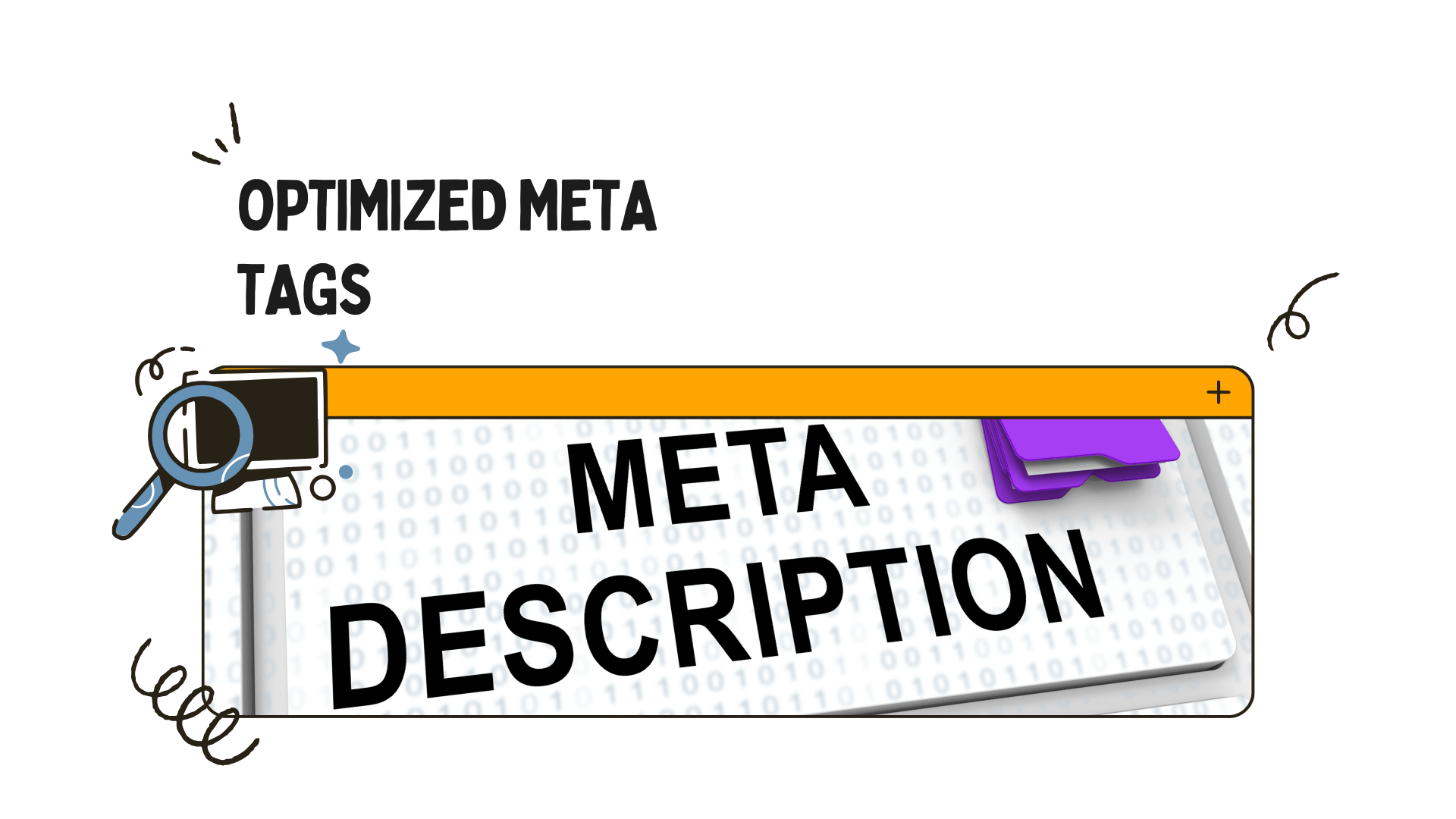
Metadata includes title tags, meta descriptions, header tags, alt text (for images), and canonical tags. These all represent specific information you can give to search engines that helps them understand your content and determine how it should appear in SERPs.
Title tags and meta descriptions directly influence click-through rates by providing users with a clear, compelling summary of your page. Header tags improve the structure and readability of your content, making it easier for search engines and visitors to navigate. Alt text for images enhances accessibility and allows your visuals to be indexed for image search, while canonical tags prevent duplicate content issues that could harm your rankings.
Well-optimized metadata ensures your arborist website stands out in search results, attracts the right audience, and delivers an engaging user experience that drives conversions.
Clear, descriptive URLs help visitors understand your page’s purpose in the blink of an eye, making navigation easier and more intuitive. For example, instead of a generic URL like www.yoursite.com/page1, a well-optimized arborist service URL might look like www.yoursite.com/tree-removal-services or www.yoursite.com/stump-grinding-cityname.
These URLs reflect what a user can expect to find on your page and often include keywords relevant to your services, which search engines use to rank your site. Consistent, logical URL structures also make it easier for users to find specific information without getting lost.
Internal links connect one page on your website to another, guiding visitors and search engines through your content. For example, you might have a link on your homepage that directs users to your "Tree Removal Services" page or a blog post about "Seasonal Tree Care Tips" that links to your "Tree Pruning FAQ" page. These links make it easier for visitors to find the specific information they’re searching for.
For search engines, internal links help establish a clear structure and hierarchy, allowing crawlers to better understand your site and index its pages. By strategically placing links to key pages—like service descriptions, contact forms, or service areas—you can lead users toward taking important actions, like booking an appointment.
Overall, on-page SEO makes it easier for web crawlers to spot that your site is relevant and helpful for user questions. It helps you rank higher and drives more traffic to your site, but it’s just one part of an effective SEO strategy.
Off-page SEO involves building your online presence outside your tree care website to improve its credibility, authority, and search engine rankings. This includes earning backlinks from reputable sources, which tells search engines your site is trustworthy and relevant.
Positive online reviews on platforms like Google, Yelp, and Angi also boost your reputation and attract more local customers. Social media engagement is another vital aspect, allowing you to share helpful tree care tips, display your services, and connect directly with your audience.
Off-page SEO complements your on-site efforts, ensuring your tree care business stands out in search results and reaches homeowners and property managers looking for reliable services.
Building links from reputable sites, guest blogging, brand mentions, and social engagement are the bread and butter of a successful off-page SEO strategy for your tree care business.
Link building involves earning backlinks from trusted websites, like local directories, landscaping blogs, or environmental organizations. These links let search engines know your site is credible and authoritative. To get these links, focus on creating valuable content that other sites will want to share, like tree care guides or seasonal maintenance tips.
Guest blogging is another effective tactic—writing expert articles for industry-related blogs provides backlinks and positions your brand as a thought leader. Even without direct links, brand mentions build your reputation online and can come from community partnerships, testimonials, or local media coverage.
Social engagement—sharing content, responding to followers, and joining conversations—is another way to keep your business top of mind and amplify your reach, encouraging more natural links and mentions.
Having a good grasp on building links is a great way to establish your industry authority, but you’ll still need a way to put your expertise in front of those property owners who need it now. That’s where local search engine optimization techniques come in.
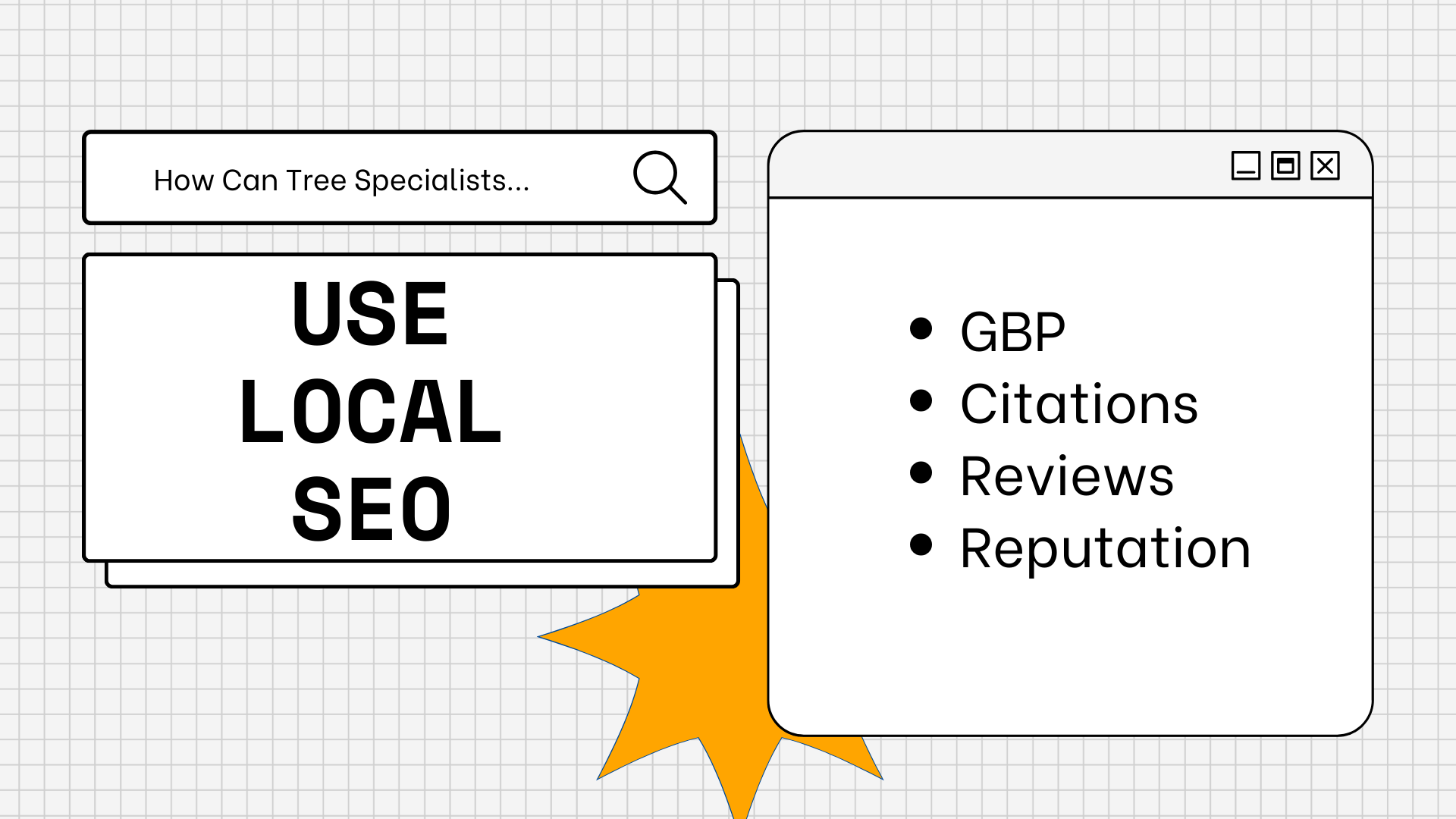
Local SEO involves optimizing your online presence to connect with customers in your area, especially through tools like Google Maps. It works by helping search engines understand your business location and services to match you with local searchers. For example, if someone in your area searches for "tree trimming near me," Local SEO increases the chances of your tree care business appearing in organic search results and Google Maps.
To achieve this, claim and optimize your Google Business Profile (GBP) with accurate details like your company name, address, phone number, business hours, and a list of your services. Including location-specific keywords, like "stump grinding in [city]," in your website content and meta tags also enhances visibility.
Positive reviews on platforms like Google and Yelp further improve your local ranking and help your business stand out to nearby customers looking for a reliable arborist.
With your GBP claimed and optimized, we’ll round out the fundamentals of local SEO by explaining why you want to stay on top of online citations and how reviewing them and implementing a reputation management process helps your tree service company outrank your competitors.
Citations are online mentions of your business’s name, address, and phone number (NAP), typically found in directories, review sites, or social media profiles. They tell search engines your business is legitimate and trustworthy, and this “vote of confidence” helps improve your page rank. Consistency is the golden rule—if your NAP details vary across platforms, it can confuse search engines and hurt your local SEO efforts.
Did you know you can encourage satisfied customers to leave reviews by making it easy? All you have to do is provide links or reminders after completing a job. Be sure to take the time to respond to all the reviews you receive—both positive and negative. This shows your business values customer feedback and is committed to addressing concerns.
Monitor review platforms and social mentions regularly to understand how people perceive your business online. Pair this with a strong reputation management strategy to ensure your company maintains a strong, professional image and builds trust with potential customers.

Technical SEO encompasses everything you can do behind the scenes to improve your tree service company’s website performance, visibility in SERPs, and UX score. This means you want to make sure your site loads fast, is secure, and is easy to navigate. Key elements include optimizing page load times, using mobile-friendly design, setting up secure HTTPS connections, and creating a clear site structure with XML sitemaps and clean URLs.
Implementing structured data (schema markup) can also help search engines understand your services, like "tree trimming" or "stump removal," and display them more effectively in search results.
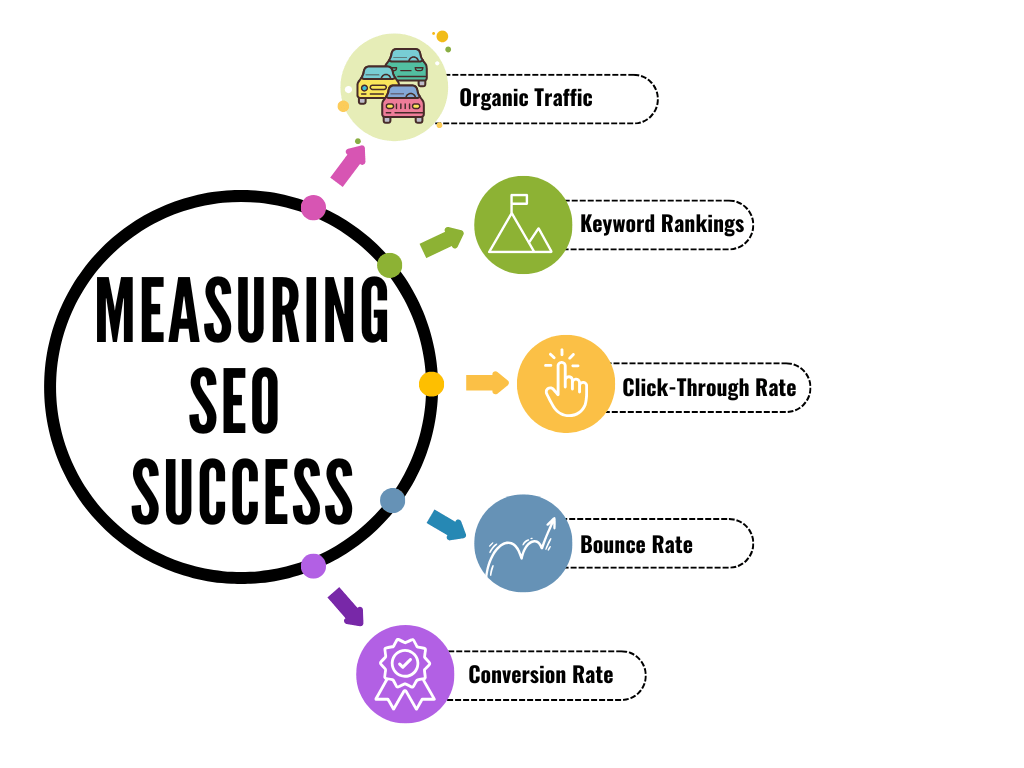
To understand how well your SEO efforts are working, you need to track specific metrics showing how your website performs in search engines and engaging visitors. Measuring success involves assessing visibility and user interaction to refine your strategy over time.
Tree service providers should pay attention to and track the following metrics:
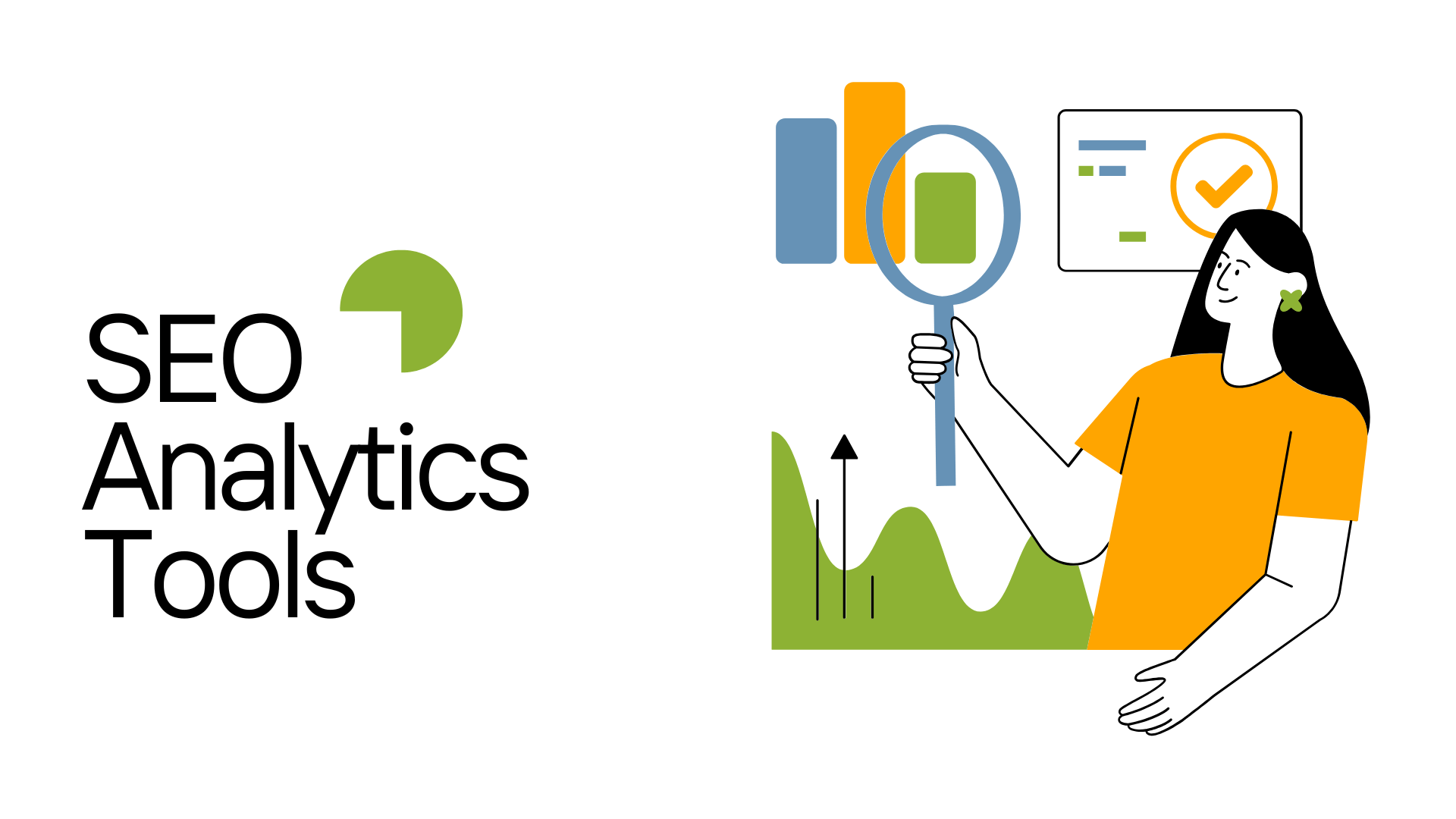
There’s a wide range of SEO analytics tools available, each offering unique features to provide detailed insights into your website’s SEO performance. These tools vary in functionality, pricing, and user-friendliness, so finding the right fit depends on your needs and preferences.
Rather than hitting you with an exhaustive list, we’ll tell you more about three essential tools that are simple to use and will help you track the five key metrics we’ve outlined above:
You can use Google Analytics to monitor metrics like traffic sources, page views, bounce rates, and conversion rates. It helps you understand how visitors find and interact with your site. With features like audience demographics, device usage, and session duration, Google Analytics provides a clear picture of your audience and their preferences.
This information helps you identify what’s working, uncover areas for improvement, and make data-driven decisions to optimize your website and achieve your business goals.
Google Search Console is a free tool that helps you monitor and maintain your website’s presence in Google search results. It provides valuable insights into your site’s performance, including keyword rankings, click-through rates (CTR), and the number of pages indexed. You can also identify technical issues, including crawl errors or mobile usability problems, and fix them to improve your SEO.
SEMrush is a versatile SEO tool designed to help you enhance your website’s performance and outshine competitors. It combines robust features like in-depth keyword research, detailed site audits, backlink tracking, and competitor analysis. This tool allows you to pinpoint valuable keywords, monitor how they rank, and identify gaps in your SEO strategy.
Content marketing goes hand in hand with SEO because high-quality, relevant, and keyword-optimized content is what you need to strengthen your website’s authority and search visibility. It’s a strategic approach to creating and sharing valuable, relevant, and engaging content to attract and retain a clearly defined audience.
Unlike traditional advertising, content marketing provides helpful information that solves problems, answers questions, or entertains. Think of it as an excellent way to build trust and credibility over time. You can do this with blog posts, videos, social media updates, guides, or infographics tailored to your audience’s interests and needs.
Your end goal is to establish your brand as an authority in your field, nurture relationships with your audience, and drive profitable customer actions, like making a purchase or booking a service. Use content marketing to build lasting connections with potential tree service customers.
Here’s how:
These strategies will keep your audience engaged and help people see your arborist business as the go-to resource for local tree care solutions.
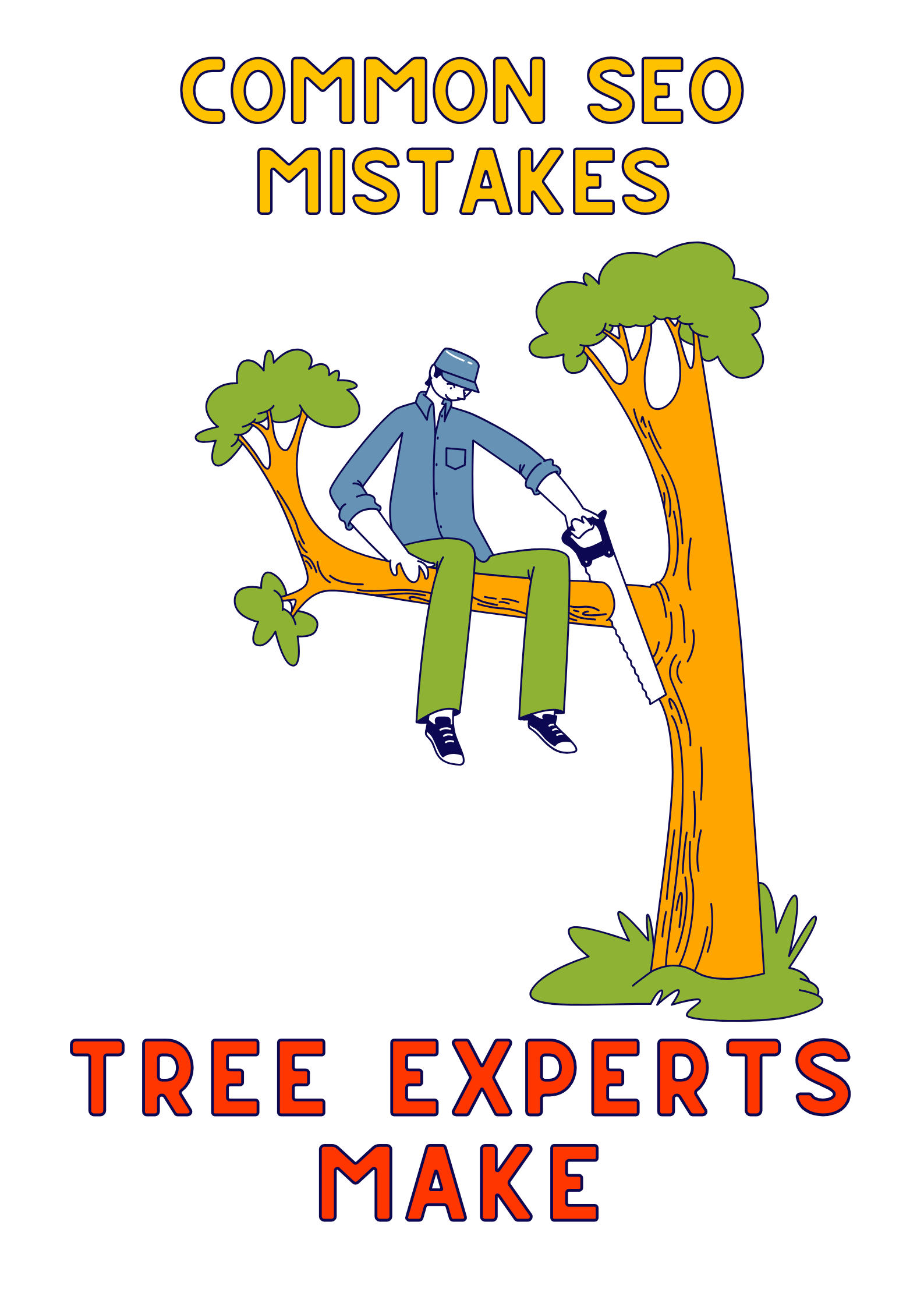
Tree experts often miss out on maximizing their site’s SEO potential by making a few common mistakes that earn them significantly lower page rank than they could achieve if they used the SEO best practices we outlined above.
As an overview, when you want to connect with the most potential clients online, you should steer clear of:
SEO trends are constantly evolving, and it pays to keep your finger on the pulse of what’s working and driving more clicks, engagement, and calls for tree service contractors. We anticipate answer engine optimization, voice search, and image and video search to be key trends shaping the future of search for arborists and other types of tree service contractors.
Here’s what you need to consider when you adjust the way you think about and refine your site’s UX to stay ahead of competitors looking forward:
With answer engine optimization, you can create content to provide direct answers to user queries often found in Google’s featured snippets or “People Also Ask” sections. AEO aims to position your content as the immediate solution to specific questions. This satisfies users quickly and shows people you’re an arborist who knows what you’re talking about.
Forget typing. Voice search frees up your hands and lets you use verbal commands to get the information you need through smart speakers, smartphones, and virtual assistants like Siri, Alexa, and Google Assistant. It offers a faster, hands-free, and more conversational way to find information. As more people rely on voice-activated technology for convenience, businesses must adapt their content to match natural language queries that are now more often coming in question form.
Image and video search allows users to discover information through visual content, like photos or videos, rather than relying solely on text-based results. These searches are popular because they provide instant, easily digestible answers—whether it’s seeing how tree pruning is done in a video or identifying tree species from an image. Visual content is engaging, simplifies complex topics, and often feels more intuitive, making it easier for people to connect with the information they’re looking for.
Do you want step-by-step instructions or a partner who will show you the ropes and assemble a winning optimization strategy? LinkNow’s SEO specialists have what it takes to help you attract more qualified leads searching for tree services near you.
Looking for SEO solutions for your arborist company? Book a free call with LinkNow for help personalizing your SEO strategy.